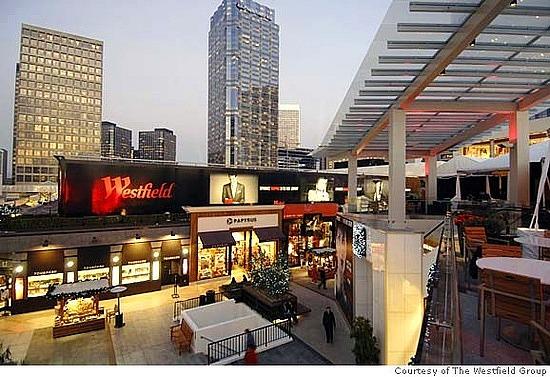To give a perspective from someone in the real estate industry–in industry mags, business journals, conferences and random semi-drunken chatter among colleagues–the open air mall concept, which is frankly just a form of strip mall, is seen as outperforming enclosed malls tremendously for the last 30 years.
A traditional mall is typically anchored by a major retailer, historically this would be a Sears or a Macy’s type store. The concept that drives a traditional mall is people go here for intentional shopping trips, i.e. I want to “buy stuff.” This is important–because they are often going to “buy stuff” they are open to strolling around the nice, air-conditioned enclosed mall and window shopping. They also have a food court to keep people fed and content.
What is the potential competition for this? Well, online shopping. People who are just kinda in the mood to splurge, now do not need to stroll the mall to window shop, they can just pull up Amazon or a favored e-retailer and look around at what’s on sale, and buy it from the comfort of their own home.
Strip malls are frequently anchored by grocery stores, because they aren’t betting on the same type of mall traffic. While online grocery ordering is obviously a thing, grocery purchasing is still something massively, and overwhelmingly, done in person. It’s also something everyone has to do. When you anchor a midsize strip mall around a grocery store a lot of good things start to happen. The regular customers of that grocery store, who might go there 1-3 times a week, are going in and out of your mall regularly.
What do they see when they do that? They see the other stores, and maybe they don’t need them that day, but in the back of their mind they now remember–well there’s a UPS Store near Kroger, so if I need to ship something I’ll just do it next time I’m at the store. Or–oh yeah, there’s an ice cream place near Kroger, so I’ll take the kids there today after we grocery shop. Or–oh yeah there’s a small men’s clothing store near Kroger where I can buy a few dress shirts for my trip next week when I go to the grocery store.
Savvy strip malls also have a few “secondary anchors” other than the supermarket, these are businesses that relate to “recurring services” that people need to use regularly. Traffic to these recurring service businesses can further drive traffic to the mall and more exposure for the other stores. Examples of some of these secondary anchors are things like gyms and fitness clubs, SuperClips style haircut places, etc. Hell, I’ve seen government offices and doctor’s offices set up in these strip malls too. One that I’m familiar with has a DMV office. Hey, no one likes going to the DMV, but people have to do it, and hey, maybe I’ll stop at Cold Stone for some ice cream to alleviate the shittiness of having to deal with the DMV. Or maybe I’ll stop at the Mexican place after going in for my doctor’s appointment.
Easton Town Center that @Jackmannii has mentioned is pretty famous in the industry, while it is open air it doesn’t really fit the strip mall definition per say, it is a true open air traditional mall. Easton has a few things going for it though, one is that it has successfully marketed itself as a true “destination.” Easton isn’t really just subsisting on Columbus area money, it literally has shopping crazed types traveling 2-3 hours from other States even to visit, and there’s a Marriott right there to accommodate them–people do overnight trips just to visit Easton. It is also double anchored by a massive Nordstrom’s and a massive Macy’s, it is also just a few exits down I-270 from the Columbus airport, so people coming into town on business or whatever can easily stop by Easton to do some shopping.
There are a few other “open air” traditional malls like Easton around the country, but I think Easton is the most prominent or one of the most prominent in the eastern United States and one of the most successful. A big limitation of this type of retail is the only ones I’m familiar with that have sustained success have generally been fairly upmarket, so these limits places developers can build them. The grocery store anchored strip malls succeed in almost all economic areas because everyone needs what they offer–in an upmarket area it will be anchored by a fancier store like a Wegman’s or Whole Foods, and have fancier ancillary stores, in a lower market area it’ll have like a Food Lion or something and have typical lower rent business.


